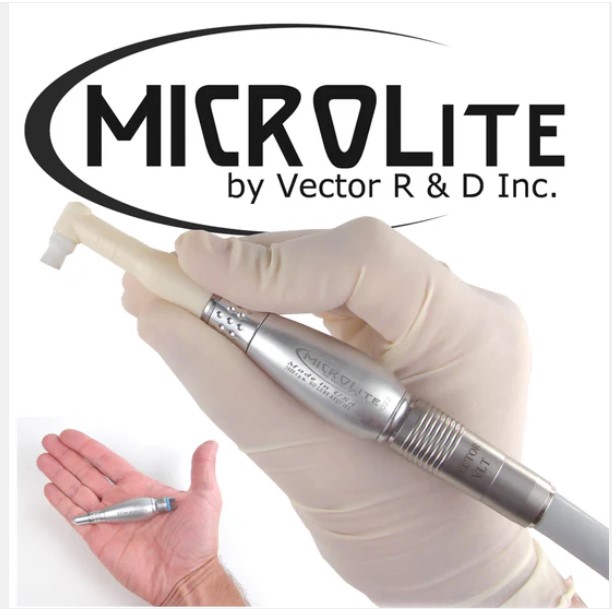Dental handpieces are one of the most critical tools in a dentist’s arsenal. Whether performing simple cleanings or complex procedures, high-quality handpieces ensure precision, comfort, and efficiency. Investing in premium dental handpieces is not just about the dentist’s experience but also about improving patient satisfaction and treatment outcomes.
Why Dental Handpieces Matter in Modern Dentistry
Modern dentistry relies heavily on technological advancements. Quality handpieces contribute to smoother procedures, reducing patient discomfort and increasing efficiency. Precision-driven tools enable accurate cuts, minimize trauma to the teeth and gums, and ultimately enhance overall dental care.
Types of Dental Handpieces
Dental handpieces can be broadly categorized based on speed, power source, and application. Understanding the differences helps in selecting the right tool for various dental procedures.
High-Speed vs. Low-Speed Handpieces
- High-Speed Handpieces: Used for cutting enamel and dentin, performing crown preparations, and removing decay.
- Low-Speed Handpieces: Ideal for polishing, finishing restorations, and working on soft tissues.
Air-Driven vs. Electric Handpieces
- Air-Driven Handpieces: Lighter and more affordable but may lack consistent torque.
- Electric Handpieces: Offer more precision and consistent performance but tend to be heavier.
Key Features of High-Quality Dental Handpieces
- Ergonomic Design – Reduces hand fatigue and enhances control.
- Optimal Speed and Torque – Ensures efficient cutting and drilling.
- Noise Reduction – Minimizes patient anxiety and improves the dental experience.
- Sterilization Compatibility – Ensures proper hygiene and infection control.
- Lightweight Construction – Prevents wrist strain for prolonged procedures.
How Precision Affects Dental Procedures
Precision is key in dentistry. A slight miscalculation can lead to patient discomfort and procedural complications. High-quality handpieces offer:
- Better control over drilling depth.
- Consistent power delivery.
- Minimized vibration for more accurate results.
The Role of Ergonomics in Dentist and Patient Comfort
Ergonomically designed handpieces help reduce strain on the dentist’s hands and wrists. A comfortable handpiece also contributes to a better patient experience by ensuring:
- Smoother movements.
- Reduced noise and vibration.
- Faster, more efficient procedures.
Maintenance and Longevity: Extending the Life of Your Handpiece
Proper maintenance can extend the lifespan of a dental handpiece. Here’s a simple routine:
- Daily Cleaning: Use a handpiece lubricant and follow the manufacturer’s cleaning guidelines.
- Regular Sterilization: Always autoclave to prevent contamination.
- Timely Repairs: Address minor issues before they become major problems.
The Impact of Handpiece Quality on Patient Satisfaction
Patients may not understand the technical details, but they notice the results. A high-quality handpiece ensures:
- Quicker procedures with minimal discomfort.
- Reduced post-treatment sensitivity.
- A more pleasant overall experience.
Compliance with Industry Standards and Regulations
Reputable dental handpieces comply with industry regulations such as:
- ISO Standards – Ensure product safety and performance.
- FDA Regulations – Maintain hygiene and medical device quality.
- CE Certification – Confirms adherence to European safety standards.
Innovations in Dental Handpiece Technology
The latest advancements in dental handpieces include:
- LED Illumination for better visibility.
- Smart Sensors that adjust speed and torque automatically.
- Noise-Reduction Technology to minimize patient anxiety.
How to Choose the Best Dental Handpiece for Your Practice
When selecting a dental handpiece, consider:
- Procedure Type: High-speed for cutting, low-speed for polishing.
- Ergonomics: Comfortable grip and weight balance.
- Budget: A balance between cost and features.
- Manufacturer Reputation: Reliable brands ensure durability and support.
Common Mistakes to Avoid When Buying a Dental Handpiece
- Choosing Based on Price Alone: Cheap models may lack durability.
- Ignoring Maintenance Requirements: Some handpieces require more frequent servicing.
- Overlooking Ergonomics: Poorly designed tools can cause strain.
- Not Checking Warranties: A longer warranty often indicates better quality.
Frequently Asked Questions
1. How often should I lubricate my dental handpiece?
Most manufacturers recommend lubrication after every use to maintain optimal performance.
2. What is the lifespan of a quality dental handpiece?
With proper maintenance, a high-quality handpiece can last anywhere from 3 to 5 years.
3. Are electric handpieces better than air-driven ones?
Electric handpieces provide more consistent torque and precision, but air-driven handpieces are lighter and more affordable.
4. Can I sterilize my handpiece in an autoclave?
Yes, most high-quality handpieces are autoclave-compatible, but always follow the manufacturer’s guidelines.
5. Why is noise reduction important in dental handpieces?
Lower noise levels help reduce patient anxiety and create a more comfortable dental experience.
6. What features should I look for in a durable dental handpiece?
Focus on materials, ergonomic design, consistent torque, and manufacturer reputation.
Conclusion
Investing in quality dental handpieces is a decision that benefits both dentists and patients. Precision, comfort, and durability make a significant difference in daily dental procedures. By choosing the right tools and maintaining them properly, dental professionals can enhance efficiency, improve patient outcomes, and ensure long-term reliability.









